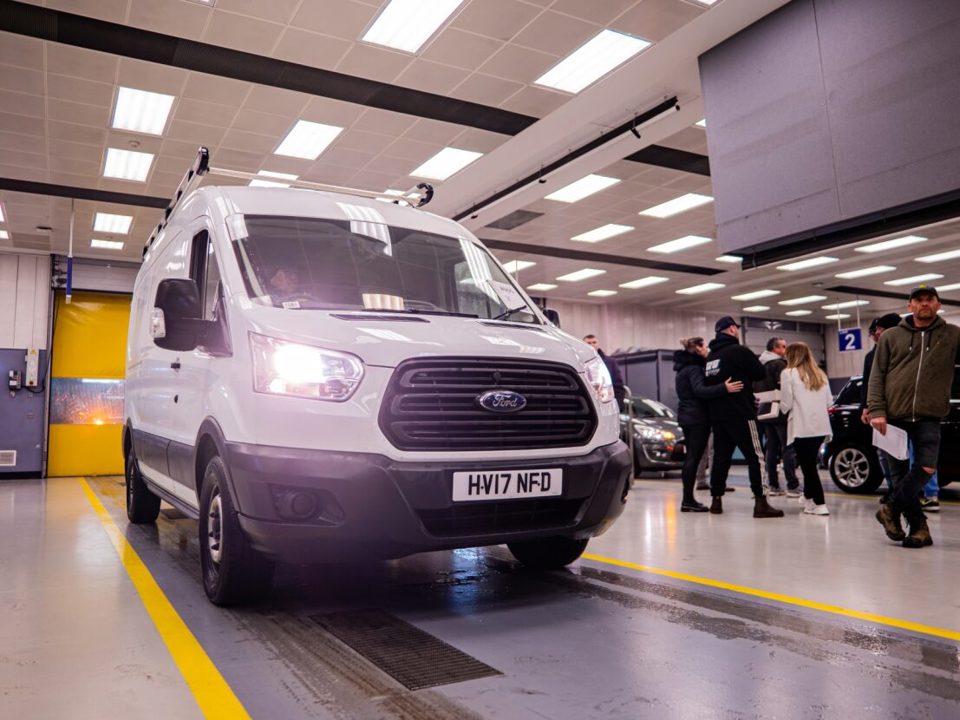Used van values and sold volumes increased during the first quarter of the year, according to new data from Manheim.
Year-on-year volumes were up 21%, while the average sold price increased by £554 between February and March, with 22% of stock selling above guide price.
The sector also saw positive performance across days to sell and first-time conversions.
Furthermore, the average age and mileage of used vans also showed signs of improvement.
In Q1 2025, sold used vans averaged 71 months (6 years) in age and 79,822 miles on average.
However, just 15.4% of stock fell into the “prime” category (under 3 years old and 60,000 miles). The remaining 84.6% averaged 113,718 miles.
Prime stock remains competitive due to its limited availability, performing 6.8% above guide value prices, while demand for older vehicles is sustained due to its lower average price point (£5,625).
Matthew Davock, director of commercial vehicles at Manheim UK, explained: “These trends are largely driven by fleet and rental operators who have reduced the average age of fleet assets.
While competition for prime stock continues to heat up, the lower-cost vehicles offer a viable option for tradespeople looking to reduce their expenditure during tough economic conditions.
“Overall, this reflects a robust quarter for the used van marketplace, with the industry now in a much better place in terms of price, demand and overall supply.”
Buyer confidence ‘holding back’ used electric van performance
Manheim reports a growth in electric vans across the used market. In Q1, there was a 62.6% increase in electric van arrivals across Manheim’s UK sites.
These vehicles are significantly younger than other stock, carrying an average mileage of 29,000 miles at around 42 months old (3 years).
However, Manheim says that buyer confidence held performance back, with 88% of guide values achieved and only four in 10 vans selling first time.
Davock said: “The used electric van sector, much like its consumer vehicle counterpart, still faces significant roadblocks to improving confidence.
“With much higher stock levels being defleeted across the industry, and over 2500 used electric vans being advised on retail publications today, more must be done to incentivise adoption and promote the consumer benefits of electric van ownership.”
Registrations of new electric vans failed to hit Government targets in 2024, with sales figures from the Society of Motor Manufacturers and Traders (SMMT) showing a marginal increase.
New battery electric van registration volumes rose by 3.3% to 22,155 units, equating to a 6.3% market share – the same as in 2023.
Manufacturer targets for sales of new electric vans, contained within the zero emission vehicle (ZEV) mandate, required 10% of all new vans registered in 2024 to be zero emission. This year, that increases to 16% of all new vans.
Fleets are awaiting the Government’s response to a consultation that seeks to reduce the barriers to electric van adoption by defining the regulations for vehicles that fall within the 4.25-tonne derogation.
The DfT announced in February that fleets would continue to benefit from up to £5,000 off an electric van after it extended the plug-in van grant until April 2026.
The plug-in van grant will also remain at the same level, offering up to £2,500 when buying a small van up to 2.5 tonnes and up to £5,000 for larger van up to 4.25 tonnes.





















Login to comment
Comments
No comments have been made yet.